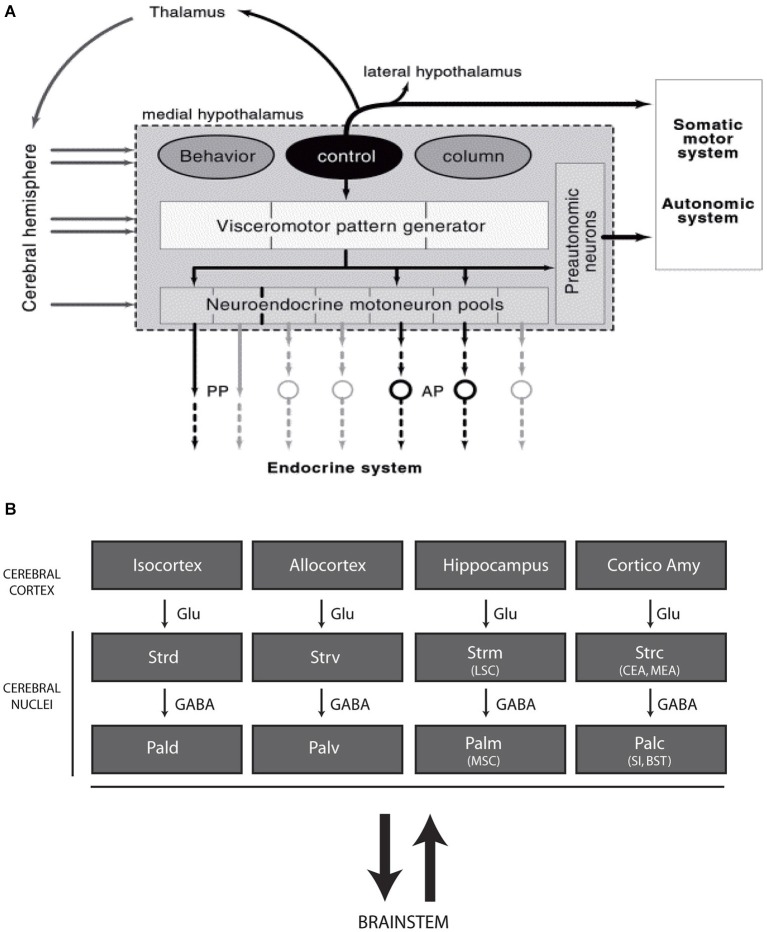Figure 1.
(A) Diagram illustrating the recent concept of the morphofunctional organization of the hypothalamus. Hypothalamic periventricular structures form a visceromotor pattern generator (VMPG) network that controls neuroendocrine and visceral responses. This VMPG is influenced by medial zone nuclei. These nuclei form a behavioral control column and are involved in the expression of goal oriented behaviors. They control somatic motor responses through projections in the tectum (periaqueductal gray), but they are also involved in closed loop circuits with the telencephalon, in particular through projections to the thalamus. Reproduced with permission from Thompson and Swanson, 2003. (B) Schematic representation of the organization of the telencephalon (adapted from Risold, 2004). The cerebral cortex as a whole, including the cortico-amygdaloid nuclei, topographically projects onto the striatum (dorsal, ventral, medial, and posterior divisions), which is connected with the pallidum (similarly parceled into dorsal, ventral, medial and posterior divisions). While projections from the cortex are glutamatergic, the striatum and pallidum are massively GABAergic and are bidirectionally connected with the brainstem. Abbreviations: AP: anterior pituitary; BST: bed nuclei of the stria terminalis; CEA: central nucleus amygdala; Cortico Amy: cortical nuclei amygdala; GABA: gamma aminobutyric acid; Glu: glutamate; LSC: lateral septal complex; MEA: medial nucleus amygdala; MSC: medial septal complex; Pal d-v-m-c: dorsal, ventral, medial and caudal divisions of the pallidum; PP: posterior pituitary; SI: substantia inominata; Str d-v-m-c: dorsal, ventral, medial and caudal divisions of the striatum.

